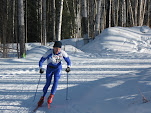Man Cries Wolf!
Tamara and the boys and I met my in-laws, John and Arlene, on Monday afternoon and at 6:00 AM on Tuesday, still quite bleary, we boarded the bus with about 60 other riders. We took the back two rows, where I sat with Tristan my 8 year old budding biologist. The road climbs through boreal forest for 15 or 20 miles before getting out of the trees and into the ecotone, where willow and alder shrubs shrink down to only a few feet tall and the spruce become widely scattered.
By 8 or 8:30 we had climbed to about 3,000 feet and into the tundra, where trees do not grow. Braded rivers wound through the flats a thousand feet below us. Mount McKinley hid in its ubiquitous summer shroud of gray clouds. The mountain is so big, at 20,000 feet, that not only is it the tallest mountain in North America, it has the largest mass for a single mountain in the world.
The openess of the tundra is excellent for wildlife viewing. At 8:35 to our right (north) the driver spotted a bull caribou about 150 meters off the road. He was explaining the dynamics of anlter growth when I looked out our window to the south and saw a dark silky shape move through the shrubs about 100 meters ahead. I did a double take. Back in the 1980s, just out of college, I worked on wolf research with the U.S. Fish and Wildlife Service in Minnesota. In nine months in the field I saw three free-ranging wolves in daylight. Could this be a fourth?
The shape reappeared, and indeed it was a canid, dark, but not quite black, with pointed ears and a pointed nose. It was way too big for a black phase of a fox and too dark for a coyote.
Quietly at first, I said "There's a wolf out there to our left." That got the attention of our family and the young couple who sat in front of us.
The wolf darted between and behind shrubs--"There's a woolf out there!" I said louder, and the word rippled up to the front of the bus. For a tense 30 seconds it disappeared, and I almost felt foolish, and commented aloud, "I'm not crying wolf. It's there."
"Where do you see it?" asked the driver over the speaker.
Just when I thought it was a mirage, the wolf appeared again, crouched down, head low, moving serpentine through the shrubs. It crossed the road in front of the bus, and everyone on board gasped.
Finally, when the wolf was about 100 meters below the caribou, the prey detected its hunter, threw it's head back, and ran up the slope toward a low knoll. The wolf followed. The caribou disappeared behind the knoll, while the wolf continued creeping up and went behind the knoll. Within seconds the caribou shot out, heading west at a sprint. We waited a minute or two and the wolf reappeard, trotting down toward the road, not unlike a dog on a walk, pleased to have flushed a covey of birds or a deer.
The driver started up and we headed back down the road. Soon we caught up to the caribou. It was running parallel to the road, briskly but no longer sprinting. About a mile ahead from the encounter we rounded a turn--the driver was in the midst of a discussion--and I looked out the window and just below another knoll was yet another dark shape, unmistakably candid, and no doubt another pack member. Waiting in surprise for the lone caribou which was fast approaching. This time I just pointed it out to those of us in the back--not wanting to have us stop the bus and disturb the action unfolding in front of us.
We had witnessed was a classic case of a pack of wolves working an isolated animal. They would be on the hunt all morning, if not all day. By lunch at the end of the 100 mile run into Kantishna I wondered if the caribou was already a meal for that pack of wovles.
Later in the morning Mount McKinley broke out miraculously of the clouds. First it's peak showed. We were 40 miles away and the top of the mountain was at least 25 to 30 degrees above the horizon. A half hour later, much of of the mountain was in view, with its ice covered slopes and crags only partially covered.
By lunch, at the end our our 100 mile ride into Kantishna, I wondered if the caribou was already a meal for that pack of wolves. On the return it rained and the mountain disappeard again. We were able to see grizzly bear sows with cubs and many Dall sheep, as well as ptarmigan, marmots, and pika.

